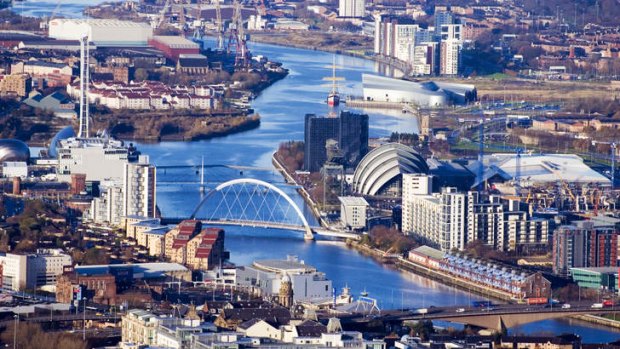
The changing face of the River Clyde.Credit: Getty Images
Ben Groundwater find Glasgow's once-rough shipyards and streets are going upmarket.
'I grew up in a pretty rough area," the taxi driver confesses, his voice distorted by the microphone in the front of the cab. "It was called Glasgow!" He chuckles at his own joke, then turns mock-serious. "Aye but it's changed now. It's posh." He turns in his seat and cocks a little finger in the air. "People drink their pints like this!"
He roars with laughter again.
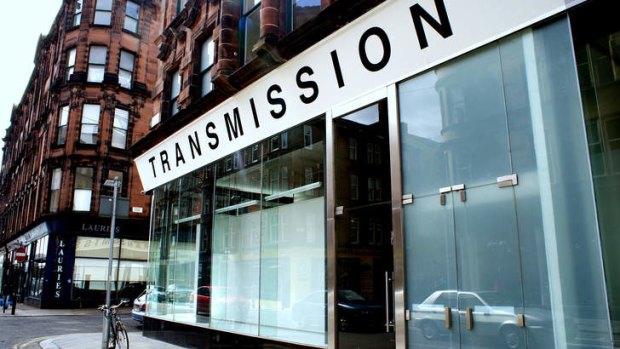
City culture: Transmission gallery.
This is Glasgow. They like to have a laugh here. You might have heard stories about the rough city with the shipyards and the football hooligans, but that's far from the truth of it.
Maybe it was once that way but as the cab driver says, things have changed. Glasgow has changed. It's not a city of industry, it's a city of culture. Those shipyards are now creative arts spaces. You're much more likely to meet a musician here than a football hooligan - it seems like everyone in this city is in at least one band, sometimes two.
There's a buzz of life in Glasgow, of activity. It's there in the thriving music venues, in the world-class art galleries, in the modern design spaces and the unpretentious, innovative food scene.
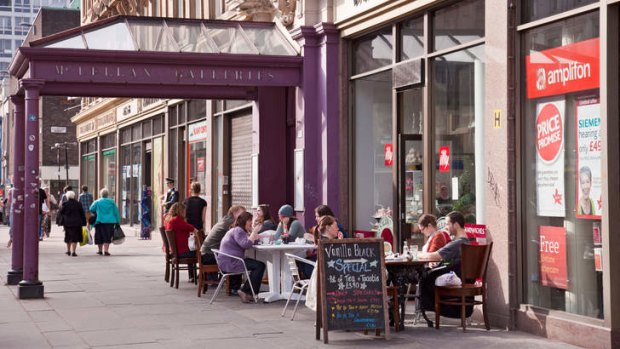
Sauchiehall Street cafes.Credit: Alamy
Most of all, it's there in the people behind it all.
The taxi is taking me to King Tut's Wah Wah Hut, a music venue as famous as any of the bands that have taken to its stage in the past 23 years. King Tut's personifies everything that's good about Glasgow these days - the sense of community; the passion for the arts. It doesn't take much to get the guys who work here talking.
King Tut's has hosted local acts such as Biffy Clyro and Snow Patrol as well as famous bands such as Radiohead, but it's the fact that Oasis were discovered here that secured the venue's notoriety.
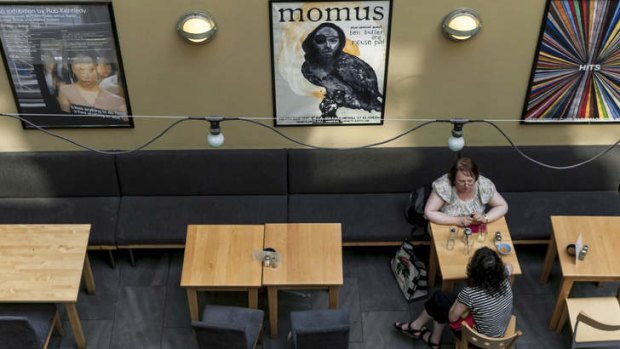
Glasgow School of Art.Credit: AFP
The Manchester-based band were the support act, the lowly openers, back in 1993, when an agent spotted them and made his move. Lee Worrall, the modern-day venue manager at King Tut's, says there's a good record of that gig, given every show here is reviewed by the bar staff.
I ask about that famous night and who the headlining act was, and Lee quickly searches through the office computer.
"A band called 18 Wheeler," he says, and then laughs one of those proper Glaswegian laughs. "Gee, they went on to big things didn't they!"
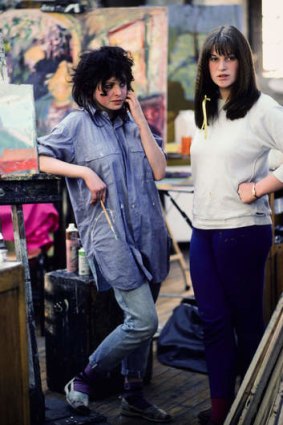
Art students.Credit: Alamy
King Tut's is the perfect music venue, small enough to be intimate but large enough to host the big acts, a character-filled room with just the right amount of dinginess.
The place has its own microbrewery and distills its own whisky. There's also a thriving restaurant, and bands play every night.
I won't have time to see one, however, because I have to move on. So it's back into a taxi, back talking to another Glaswegian cabbie. They love a chat. This one is explaining the peculiarities of the Weegie accent to me. "It's a wee bit hard to understand," he admits, laughing. "It's like someone sending a text message without using any spaces!"
Anyone who doubts that Glaswegian is a language of its own need only read the menu at the Butterfly and Pig, one of the city's more cutting-edge bars. There are doilies on the tables and vintage crockery at tea time here, but it's the words on the page that provide the most atmosphere. The menu offers, "Haddy hannan finny fanon with mashed potatoes and poachy the egg". Sounds great. Also: "Ye olde strange creature with three legs and weird friends."
I'm almost certain that's a choice of smoked Finnan haddock or haggis. Maybe. Eventually I opt for a hamburger.
Back on the road and another Glaswegian cab driver is holding forth from the front seat, this time extolling the virtues of his home city as opposed to Edinburgh, the fancy, attractive sister about an hour's drive away. He fixes me with a stare in the rear-view mirror and waggles a finger in warning: "You'll meet some strange, strange people in Edinburgh."
I laugh. There's a rivalry, obviously, between these two Scottish cities, one of which is famous for castles, comedy and military tattoos, the other known for heavy industry and head-butting. But you could think of Edinburgh and Glasgow as being like Sydney and Melbourne - one is instantly attractive and tourist-friendly while the other is not quite as nice to look at but is rich with culture and provides ample reward for those willing to seek it out.
My next reward is the Glasgow School of Art, a building designed by Charles Rennie Mackintosh, one of the pioneers of the city's creative industries. Mackintosh, a famed architect and furniture designer, drew plans for the building in the early 20th century. Even now it's one of Glasgow's most impressive edifices.
Like much of this seemingly bleak city, there are hidden worlds behind closed doors. From the outside, the School of Art building looks similar to any other in inner Glasgow, but it's inside that the talent of Rennie Mackintosh is revealed. From the visual trickery of ceilings that get lower and rooms that get smaller the higher in the building you go - making it feel as though you're descending, rather than climbing - to quirks such as eyes in the doors to remind students they're being watched, this place a feast for design nuts and well worth the guided tour.
From the time of Rennie Mackintosh there has been an indelible link between Glasgow's industrial facade and the creative talent that lurks behind it. The city grew rich from the shipyards and much of that money was poured into nurturing the arts. Today, despite the loss of much of that industry, there are venues that blur the lines between the two.
Down beside the River Clyde in Merchant City, an area of abandoned warehouses and dingy pubs, the former fish market site has become a studio space for more than 80 artists. The Briggait hosts regular exhibitions and everything from art schools to circus classes, but is worth a visit to just see the covered courtyard, built in 1873.
Merchant City also hosts many of Glasgow's better-known art galleries. The likes of Tramway, Transmission and Mono are the perfect places to sample the works of some of the city's up-and-coming and more experimental artists.
Those seeking more traditional works, however, need to jump back into a taxi. On a sprawling estate on the outskirts of Glasgow lies perhaps the city's most impressive artistic display. The Burrell Collection is a little like Hearst Castle in the US, a personal horde of art and artefacts sourced from many places across many ages.
There are centuries-old Greek arches set into the purpose-built museum. The collection itself is a dazzling array of Egyptian artefacts, huge mediaeval tapestries, priceless Chinese vases, stained-glass windows rescued from the ruins of churches, suits of 16th-century armour, and paintings by Cezanne.
It's not what you expect to find in Glasgow. But, then it's a little posher here than even the taxi drivers would like to let on.
Ben Groundwater was a guest of See Glasgow.
FAST FACTS
Getting there Emirates has a fare to Glasgow from Sydney and Melbourne for about $2225 low-season return, including taxes. Fly to Dubai (about 14hr) and then to Glasgow (8hr); see emirates.com.
Staying there Citizen M Hotel is centrally located and has modern, comfortable rooms from $130 a night. See citizenm.com/glasgow.
More information See seeglasgow.com.
THREE PLACES TO EAT IN GLASGOW
Sample the city's unpretentious cuisine at these establishments.
Guy's Restaurant The "Guy" in question is Guy Cowan, a former movie-set caterer who put Ewan McGregor through his paces in the kitchen while the actor prepared for his role in Perfect Sense. Guy's Restaurant serves classic cuisine like fish and chips — but it's not like any fish and chips you've tried before. guysrestaurant.co.uk.
Mother India Glasgow is justifiably famous for its Indian food. Mother India is perhaps the best place to sample it. From tikka masala — which Glaswegians claim to have invented — to authentic vegetable dishes done with modern flair, this is up there with Britain's best curry. motherindiaglasgow.co.uk.
Hillhead Bookclub Glasgow's young and cool flock to this bar/restaurant, which is all dark lighting and overstuffed leather chairs set in a beautiful old building. The cuisine is the kind your gastronomically talented Scottish grandma might make, and there are ping-pong tables to keep diners amused until it arrives. hillheadbookclub.com.
Sign up for the Traveller Deals newsletter
Get exclusive travel deals delivered straight to your inbox. Sign up now.